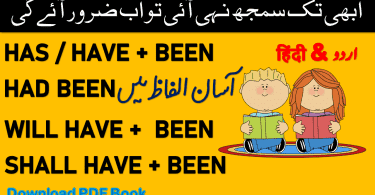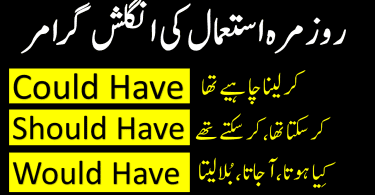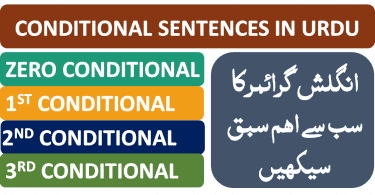Learn Personal Pronouns with an easy-to-understand chart and Urdu translations. This guide includes first-person, second-person, and third-person pronouns, along with possessive and subject pronoun charts, to help you master their usage in English.
Designed for Urdu speakers, this resource simplifies English grammar concepts and makes learning pronouns effortless. Start today to improve your understanding of personal pronouns and enhance your English skills!
In This Page
Pronoun Chart Video Lesson
اپنے اور اپنی چیزوں کے متعلق بتانے کے لیےان پروناؤن کا استعمال کریں گے۔
| Person | Nominative Case | Possessive Case | Objective Case | ||||
| 1st | Singular واحد | I | میں | My | میرا | Me | مجھے |
Examples:
| I am Qasim. | میں قاسم ہوں۔ |
| This is my car. | یہ میری کار ہے۔ |
| Ahmad gave me this car. | احمد نے مجھےیہ کار دی ہے۔ |
ہمارے اور ہماری چیزوں کے متعلق بتانے کے لیےان پروناؤن کا استعمال کریں گے۔
| Person | Nominative Case | Possessive Case | Objective Case | ||||
| 1st | Plural جمع | We | ہم | Our | ہمارا | Us | ہمیں |
Examples:
| We are students. | ہم طالب علم ہیں۔ |
| Ali is our teacher. | علی ہمارا ٹیچر ہے۔ |
| He teaches us. | وہ ہمیں پڑھاتا ہے۔ |
تمہارے اور تمہاری چیزوں کے متعلق بتانے کے لیےان پروناؤن کا استعمال کریں گے۔
| Person | Nominative Case | Possessive Case | Objective Case | ||||
| 2nd | Singular واحد | You | تم | Your | تمہارا | You | تمہیں |
Examples:
| Who are you? | تم کون ہو؟ |
| Is this your book? | کیا یہ تمہاری کتاب ہے؟ |
| Who is calling you? | تمہیں کون بلا رہا ہے؟ |
ہمارے اور ہماری چیزوں کے متعلق بتانے کے لیےان پروناؤن کا استعمال کریں گے۔
| Person | Nominative Case | Possessive Case | Objective Case | ||||
| 2nd | Plural جمع | You | تم | Your | تمہارا | You | تمہیں |
وہ (لڑکا)اور اسکی چیزوں کے متعلق بتانے کے لیےان پروناؤن کا استعمال کریں گے۔
| Person | Nominative Case | Possessive Case | Objective Case | ||||
| 3rd | Singular (واحد(مذکر | He | وہ | His | اس کا | Him | اسے |
Examples:
| He is hardworking. | وہ محنتی ہے۔ |
| His name is Zain. | اسکا نام زین ہے۔ |
| I like Him. | میں اسے پسند کرتا ہوں۔ |
وہ (لڑکی)اور اسکی چیزوں کے متعلق بتانے کے لیےان پروناؤن کا استعمال کریں گے۔
| Person | Nominative Case | Possessive Case | Objective Case | ||||
| 3rd | Singular (واحد(مؤنث | She | وہ | Her | اس کا | Her | اسے |
Examples:
| She is innocent. | وہ ماسوم ہے۔ |
| Her name is Bisma. | اسکا نام بسما ہے۔ |
| I meet her daily. | میں اسے روزانہ ملتا ہوں۔ |
وہ (بے جان) چیزوں کے متعلق بتانے کے لیےان پروناؤن کا استعمال کریں گے۔
| Person | Nominative Case | Possessive Case | Objective Case | ||||
| 3rd | بے جان | It | وہ | Its | اُس کا | It | اُسے |
Examples:
| It is my laptop. | وہ میرا لیپٹاپ ہے۔ |
| Its color is black. | اُسکا رنگ بلیک ہے۔ |
| It is liked very much. | اُسے بہت پسند کیا جاتا ہے۔ |
وہ (ایک سے زیادہ) لوگوں اور انکی چیزوں کے متعلق بتانے کے لیےان پروناؤن کا استعمال کریں گے۔
| Person | Nominative Case | Possessive Case | Objective Case | ||||
| 3rd | Plural جمع | They | وہ | Their | ان کا | Them | انہیں |
Examples:
| They are Muslim. | وہ مسلمان ہیں۔ |
| Their house is in Lahore. | انکا گھر لاہور میں ہے۔ |
| I helped them. | میں نے انکی مدد کی۔ |
Exercise for you
| 1. | My name is Qasim. ……….. am a Pakistani. |
| 2. | My parents live in Multan. We visit……….. often |
| 3. | Should ……….. help you carry these books? |
| 4. | That is ……….pen and It is not……. |
| 5. | This is my jacket and that is….. |
| 6. | ……….name is Ali. |
| 7. | ………..name is Aleena. |
| 8. | He is …. Best friend. |
| 9. | They look like …….. Mother. |
| 10 | Where do …. Live? |
Download Pronouns Chart PDF
Read More




